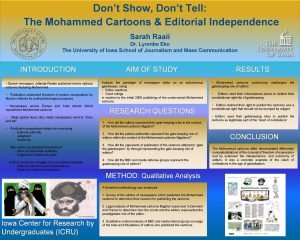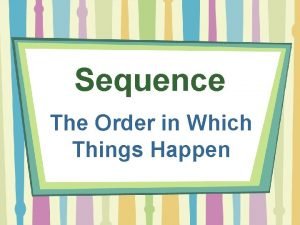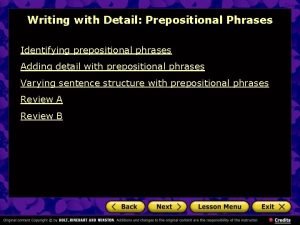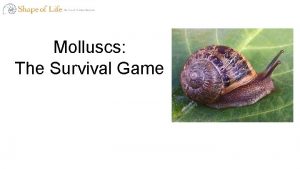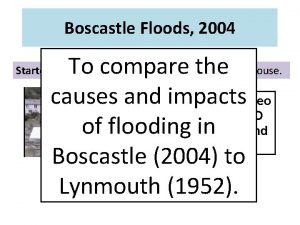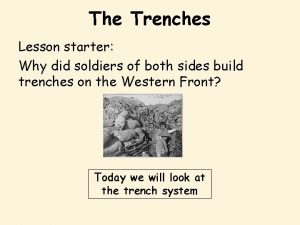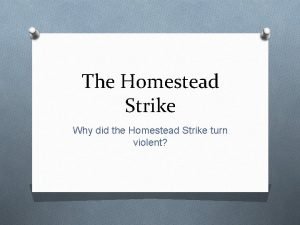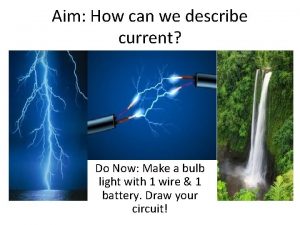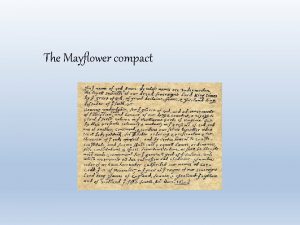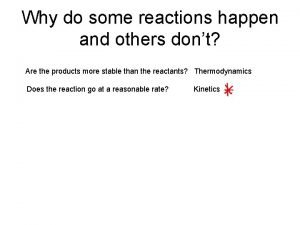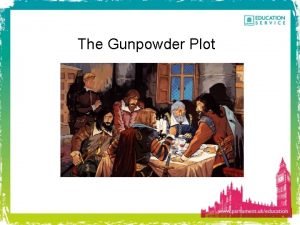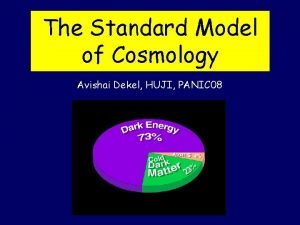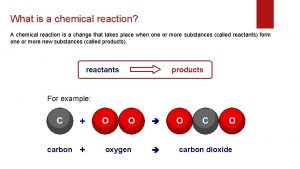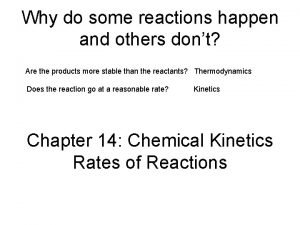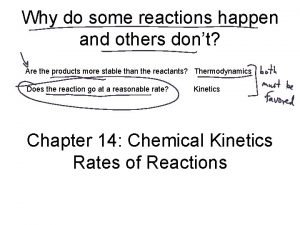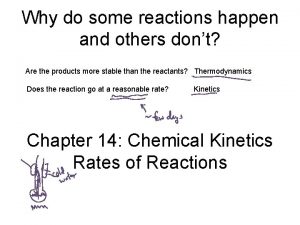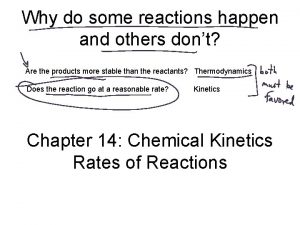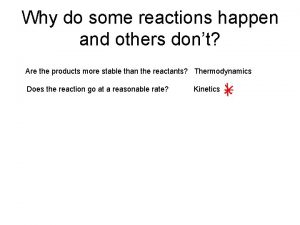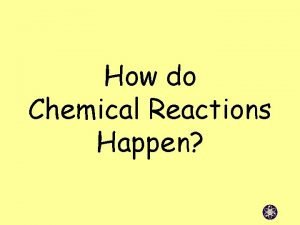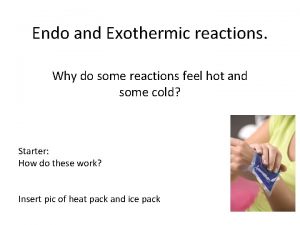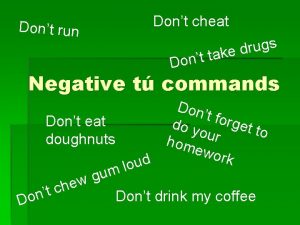Why do some reactions happen and others dont

















![Initial Rate Method: Example 2 NOTICE: When [O 2] is doubled without changing [NO], Initial Rate Method: Example 2 NOTICE: When [O 2] is doubled without changing [NO],](https://slidetodoc.com/presentation_image_h/0ca0d4825865a97b3c31940617431513/image-18.jpg)
![Initial Rate Method: Example 2 NOTICE: When [NO] is doubled without changing [O 2], Initial Rate Method: Example 2 NOTICE: When [NO] is doubled without changing [O 2],](https://slidetodoc.com/presentation_image_h/0ca0d4825865a97b3c31940617431513/image-19.jpg)
![Initial Rate Method: Example 2 The reaction is first order in [O 2] and Initial Rate Method: Example 2 The reaction is first order in [O 2] and](https://slidetodoc.com/presentation_image_h/0ca0d4825865a97b3c31940617431513/image-20.jpg)


![Example 2. A B The reaction is first order. If [A] is initially 0. Example 2. A B The reaction is first order. If [A] is initially 0.](https://slidetodoc.com/presentation_image_h/0ca0d4825865a97b3c31940617431513/image-23.jpg)


![Graphical Method for Determining Rate Laws How it works: 1. Collect [R] over an Graphical Method for Determining Rate Laws How it works: 1. Collect [R] over an](https://slidetodoc.com/presentation_image_h/0ca0d4825865a97b3c31940617431513/image-26.jpg)




![Graphical Method for Determining Rate Laws Rate = k[H 2 O 2] k = Graphical Method for Determining Rate Laws Rate = k[H 2 O 2] k =](https://slidetodoc.com/presentation_image_h/0ca0d4825865a97b3c31940617431513/image-31.jpg)












- Slides: 43

Why do some reactions happen and others don’t? Are the products more stable than the reactants? Thermodynamics Does the reaction go at a reasonable rate? Kinetics

What would affect how fast a reaction happens?

Control of Reactivity

Chapter 13: Chemical Kinetics Rates of Reactions How does a reaction take place? Consider: NO + O 3 NO 2 + O 2 Molecules collide Bonds are formed and break product molecules separate

So, what controls the rate of a reaction? • Number of collisions • How often they collide in a shape that allows new bonds to form • The energy of the colliding reactant molecules

Collision Theory For a reaction to take place: • Molecules must collide • They must do so in the correct orientation • They must collide with an energy greater than the “activation” energy

Concentration Dependence • It makes sense that as concentration increases, the number of collisions per second will increase • Therefore, in general, as concentration increases, rate increases • But, it depends on which collisions control the rate • So, you can’t predict concentration dependence- it must be measured experimentally

But, what do we mean by “rate? ” • In real life, rate = distance/time • This is change in position over time • In chemistry, generally change in concentration over time

Types of measured rates: • Rate over time: • Instantaneous rate: • Initial rate:

Example of rate measurement:

Rate Laws (also called Rate Equations) For the reaction: 2 N 2 O 5 4 NO + O 2 Rate = k[N 2 O 5] first order reaction For the reaction: NO 2 NO + ½ O 2 Rate = k[NO 2]2 second order reaction For the reaction: CO + NO 2 CO 2 + NO Rate = k[CO][NO 2] first order in CO and in NO 2; second order overall

Determining a Rate Law • Remember– it must be done by experiment; the reaction equation does not tell you the rate law • Two methods: Initial Rates Graphical Method

Determining a Rate Law: Initial Rate Method • Measure the rate of the reaction right at the start. • Vary the starting concentrations • Compare initial rates to initial concentrations

Determining a Rate Law: Initial Rate Method • Useful rules: Vary only one concentration at a time • If concentration doubles and: – Rate does not change, then zero order – Rate doubles, then first order – Rate quadruples, then second order • General Rule:

Initial Rate Method: Example 1 When concentration is doubled, rate increases by: Therefore reaction is second order: Rate = k[NH 4 NCO]2 Now, use one of the experiments to find the rate constant, k:

Initial Rate Method: Example 2

![Initial Rate Method Example 2 NOTICE When O 2 is doubled without changing NO Initial Rate Method: Example 2 NOTICE: When [O 2] is doubled without changing [NO],](https://slidetodoc.com/presentation_image_h/0ca0d4825865a97b3c31940617431513/image-18.jpg)
Initial Rate Method: Example 2 NOTICE: When [O 2] is doubled without changing [NO], the rate doubles. Therefore the reaction is first order in [O 2].
![Initial Rate Method Example 2 NOTICE When NO is doubled without changing O 2 Initial Rate Method: Example 2 NOTICE: When [NO] is doubled without changing [O 2],](https://slidetodoc.com/presentation_image_h/0ca0d4825865a97b3c31940617431513/image-19.jpg)
Initial Rate Method: Example 2 NOTICE: When [NO] is doubled without changing [O 2], the rate quadruples. Therefore the reaction is second order in [NO].
![Initial Rate Method Example 2 The reaction is first order in O 2 and Initial Rate Method: Example 2 The reaction is first order in [O 2] and](https://slidetodoc.com/presentation_image_h/0ca0d4825865a97b3c31940617431513/image-20.jpg)
Initial Rate Method: Example 2 The reaction is first order in [O 2] and second order in [NO]. Rate = k[O 2][NO]2 Now we find the value of k.

Concentration-Time Relationships

Concentration-Time Relationships
![Example 2 A B The reaction is first order If A is initially 0 Example 2. A B The reaction is first order. If [A] is initially 0.](https://slidetodoc.com/presentation_image_h/0ca0d4825865a97b3c31940617431513/image-23.jpg)
Example 2. A B The reaction is first order. If [A] is initially 0. 100 M and after 18 minutes, [A] has dropped to 0. 064 M, what is k?

Graphical Method for Determining Rate Laws

Graphical Method for Determining Rate Laws A plot of concentration vs. Time will be linear. A plot of ln[R] vs. Time will be linear. A plot of 1/[R] vs. Time will be linear.
![Graphical Method for Determining Rate Laws How it works 1 Collect R over an Graphical Method for Determining Rate Laws How it works: 1. Collect [R] over an](https://slidetodoc.com/presentation_image_h/0ca0d4825865a97b3c31940617431513/image-26.jpg)
Graphical Method for Determining Rate Laws How it works: 1. Collect [R] over an interval of times. 2. Make plots of [R] vs. time ln[R] vs. time 1/R vs. time Only one will be linear. That tells you the reaction order. The slope of the linear plot is the rate constant.

Graphical Method for Determining Rate Laws Example: 2 H 2 O 2 2 H 2 O + O 2 Time(min) 0 200 400 600 800 1000 [H 2 O 2](mol/L) 0. 0200 0. 0160 0. 0131 0. 0106 0. 0086 0. 0069

Graphical Method for Determining Rate Laws Example: 2 H 2 O 2 2 H 2 O + O 2 Time(min) 0 200 400 600 800 1000 [H 2 O 2](mol/L) 0. 0200 0. 0160 0. 0131 0. 0106 0. 0086 0. 0069

Graphical Method for Determining Rate Laws time concentration

Graphical Method for Determining Rate Laws ln(conc)
![Graphical Method for Determining Rate Laws Rate kH 2 O 2 k Graphical Method for Determining Rate Laws Rate = k[H 2 O 2] k =](https://slidetodoc.com/presentation_image_h/0ca0d4825865a97b3c31940617431513/image-31.jpg)
Graphical Method for Determining Rate Laws Rate = k[H 2 O 2] k = 0. 0011 min-1 ln(conc)

Graphical Method for Determining Rate Laws 1/concentration Check the second order plot to be sure it doesn’t also look linear.

Half-Life • Half-Life = the time it takes for half the reactant concentration to drop to half of its original value

First Order Reaction: 2 H 2 O 2 2 H 2 O + O 2 Rate = k[H 2 O 2]; k = 1. 05 x 10 -3/min

First Order Reaction: 2 H 2 O 2 2 H 2 O + O 2 Rate = k[H 2 O 2]; k = 1. 05 x 10 -3/min

First Order Reaction: 2 H 2 O 2 2 H 2 O + O 2 Rate = k[H 2 O 2]; k = 1. 05 x 10 -3/min

First Order Reaction: 2 H 2 O 2 2 H 2 O + O 2 Rate = k[H 2 O 2]; k = 1. 05 x 10 -3/min

First Order Reaction: 2 H 2 O 2 2 H 2 O + O 2 Rate = k[H 2 O 2]; k = 1. 05 x 10 -3/min

Calculations involving Half-Life For a first order reaction: At the half-life, one half is gone, so [R]t = ½ [R]o and

Radioactive Decay Radioisotopes decay via first order reactions. Instead of concentrations, amounts are used. Measured as radioactive activity, in counts per minute (cpm) using a detector.

Radioactive Decay: Example 1 Radioactive gold-198 is used in the diagnosis of liver problems. The half-life of this isotope is 2. 7 days. If you begin with a 5. 6 -mg sample of the isotope, how much of this sample remains after 1. 0 day?

Radioactive Decay: Carbon Dating Sunlight + Nitrogen C-14 In living thing Atmospheric C-14 Sunlight + Nitrogen C-14 Dead thing Atmospheric C-14

Radioactive Decay: Example 2 The Carbon-14 activity of an artifact in a burial site is found to be 8. 6 counts per minute per gram. Living material has an activity of 12. 3 counts per minute per gram. How long ago did the artifact die? t 1/2 = 5730 years
 Dont ask why why why
Dont ask why why why Dont ask dont tell political cartoon
Dont ask dont tell political cartoon Don't laugh at me allen shamblin
Don't laugh at me allen shamblin Explain why some countries are rich while others are poor
Explain why some countries are rich while others are poor Who is this?
Who is this? Why do some earthquakes cause more damage than others
Why do some earthquakes cause more damage than others The order in which things happen or should happen
The order in which things happen or should happen Pictures
Pictures Identifying prepositional phrases
Identifying prepositional phrases Why don't water and oil mix
Why don't water and oil mix Chemical reactions section 2 classifying chemical reactions
Chemical reactions section 2 classifying chemical reactions How to write redox half reactions
How to write redox half reactions Section 2 reinforcement classifying chemical reactions
Section 2 reinforcement classifying chemical reactions Chemical reactions section 3 reactions in aqueous solutions
Chemical reactions section 3 reactions in aqueous solutions Unit 5 chemical reactions answers
Unit 5 chemical reactions answers What makes some collisions elastic and others inelastic
What makes some collisions elastic and others inelastic Why dont all radulas look alike
Why dont all radulas look alike Why did the battle of lexington and concord happen
Why did the battle of lexington and concord happen Contact forces
Contact forces Some trust in chariots and some in horses song
Some trust in chariots and some in horses song Boscastle flood responses
Boscastle flood responses Why did soldiers build trenches
Why did soldiers build trenches Who wrote this
Who wrote this Why does it happen
Why does it happen Why does this happen
Why does this happen What year did the mayflower compact happen
What year did the mayflower compact happen Why did this happen
Why did this happen Why does it happen
Why does it happen November 5 1605
November 5 1605 Why did this happen
Why did this happen Modern physics vs classical physics
Modern physics vs classical physics 5 ways to lose heat
5 ways to lose heat Why do things happen the way they do
Why do things happen the way they do Why did operation rolling thunder happen
Why did operation rolling thunder happen Big bang
Big bang Explain why did it happen
Explain why did it happen Why does happen
Why does happen The munster plantation
The munster plantation They say sometimes you win some
They say sometimes you win some Sometimes you win some sometimes you lose some
Sometimes you win some sometimes you lose some The ice cream is countable or uncountable
The ice cream is countable or uncountable Some say the world will end in fire some say in ice
Some say the world will end in fire some say in ice Some say the world will end in fire some say in ice
Some say the world will end in fire some say in ice Slidetodoc.com
Slidetodoc.com

